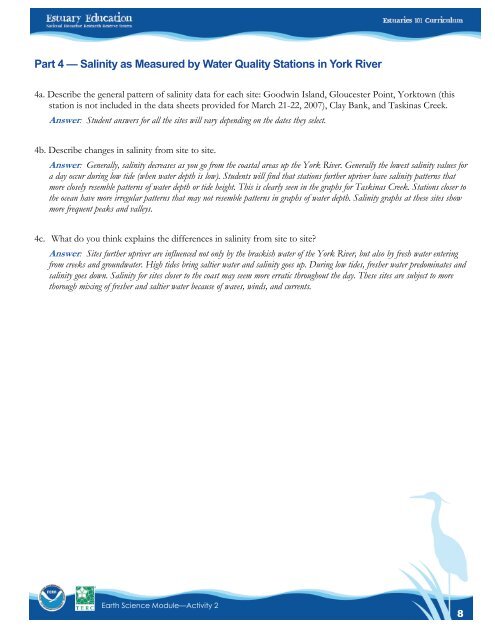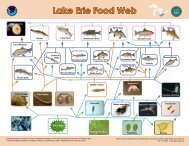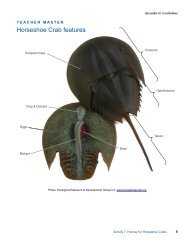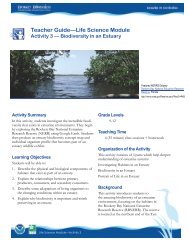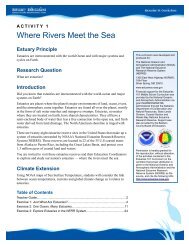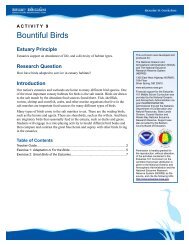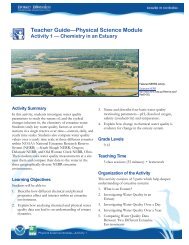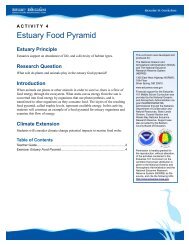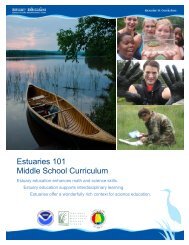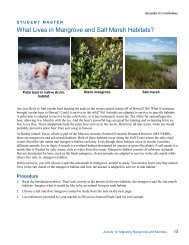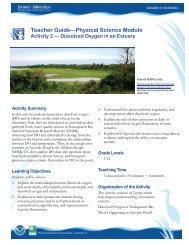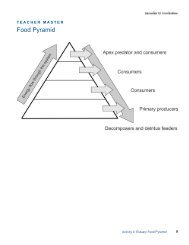Teacher GuideâEarth Science Module - Estuaries NOAA
Teacher GuideâEarth Science Module - Estuaries NOAA
Teacher GuideâEarth Science Module - Estuaries NOAA
Create successful ePaper yourself
Turn your PDF publications into a flip-book with our unique Google optimized e-Paper software.
Part 4 — Salinity as Measured by Water Quality Stations in York River4a. Describe the general pattern of salinity data for each site: Goodwin Island, Gloucester Point, Yorktown (thisstation is not included in the data sheets provided for March 21-22, 2007), Clay Bank, and Taskinas Creek.Answer: Student answers for all the sites will vary depending on the dates they select.4b. Describe changes in salinity from site to site.Answer: Generally, salinity decreases as you go from the coastal areas up the York River. Generally the lowest salinity values fora day occur during low tide (when water depth is low). Students will find that stations further upriver have salinity patterns thatmore closely resemble patterns of water depth or tide height. This is clearly seen in the graphs for Taskinas Creek. Stations closer tothe ocean have more irregular patterns that may not resemble patterns in graphs of water depth. Salinity graphs at these sites showmore frequent peaks and valleys.4c. What do you think explains the differences in salinity from site to site?Answer: Sites further upriver are influenced not only by the brackish water of the York River, but also by fresh water enteringfrom creeks and groundwater. High tides bring saltier water and salinity goes up. During low tides, fresher water predominates andsalinity goes down. Salinity for sites closer to the coast may seem more erratic throughout the day. These sites are subject to morethorough mixing of fresher and saltier water because of waves, winds, and currents.Earth <strong>Science</strong> <strong>Module</strong>—Activity 28


